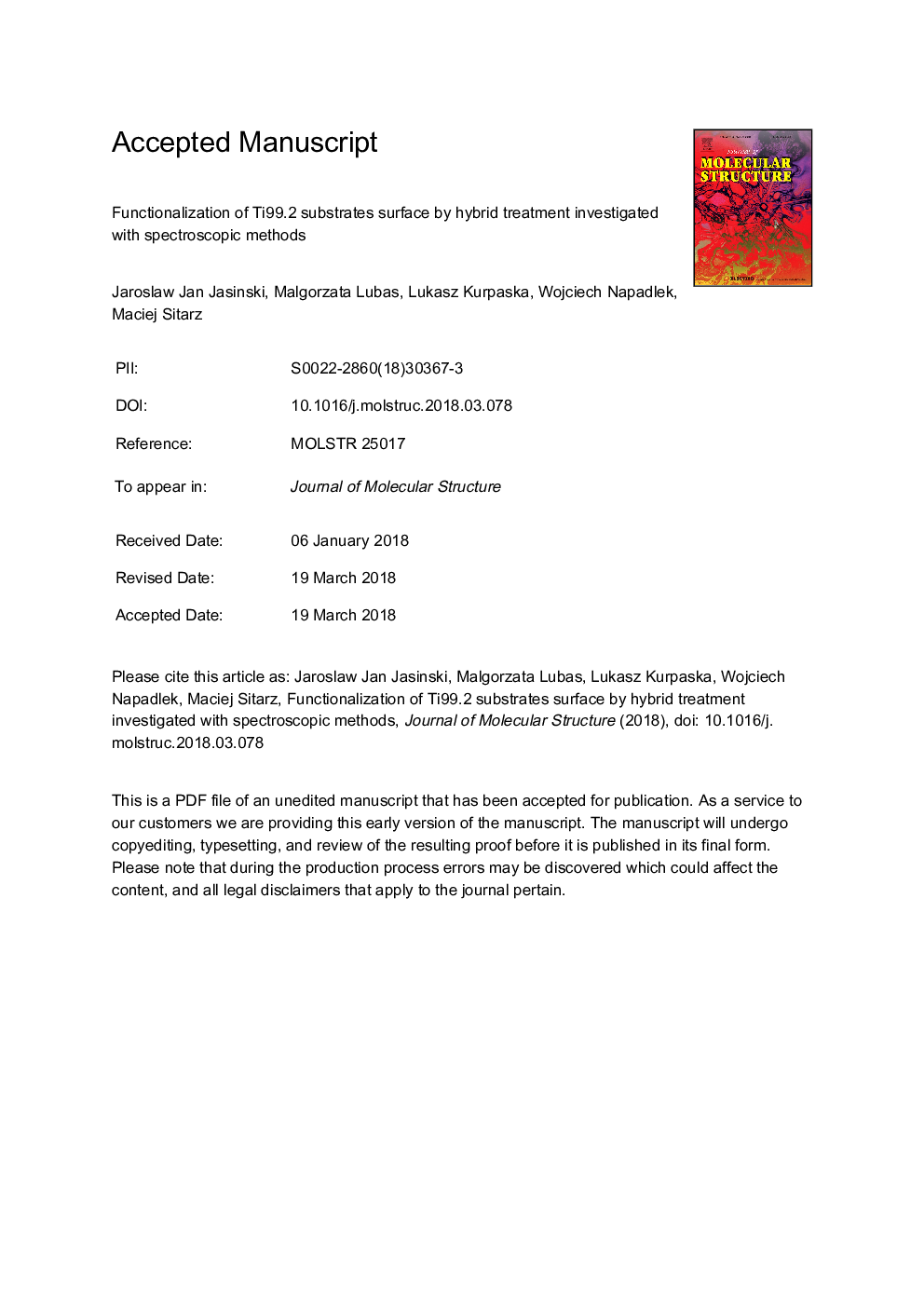| Article ID | Journal | Published Year | Pages | File Type |
|---|---|---|---|---|
| 7807527 | Journal of Molecular Structure | 2018 | 16 Pages |
Abstract
The article presents spectroscopic investigation of Ti 99.2 based functional substrates formed by hybrid oxidation process. Surface treatments were performed by combining methods of fluidized bed atmospheric diffusion treatment (FADT) with physical vapor deposition (PVD) - magnetron sputtering and laser surface texturing (LST) treatments. The processes were implemented to form a titanium diffusive layer saturated with oxygen in the substrate and a tight homogeneous oxide coating on Ti surface deposited with magnetron sputtering or laser texturing technique. The hybrid treatment was realized in Al2O3 fluidized bed reactor with air atmosphere, at 640â¯Â°C for 8â¯h and 12â¯h. At the same time, magnetron sputtering with the use of TiO2 target at a pressure of 3â¯Ãâ¯102â¯mbar and laser surface texturing treatment with Nd:YAG λâ¯=â¯1064â¯nm was performed. In order to investigate the effects of hybrid oxidation, microscopic (AFM, CLSM, SEM/SEM-EDX), spectroscopic (RS) and X-ray investigations (GID-XRD) were performed. Applied hybrid technique made possible to combine the effects of the generated layers and to reduce the stresses in the area of the PVD coating/oxidized Ti substrate interface. Furthermore, Raman spectroscopy results obtained at oxide layers manufactured with different variants of oxidation allowed detailed analysis of the created oxides. The coatings have shown structure with a Tiα(O) diffusion zone, a TiO2 rutile and anatase oxide zone deposited and textured on the substrate. Phase composition and morphology of these oxides is essential for the osseointegration process i.e. intensity of hydroxyapatite growing on the implant surface. Performed processes influenced the surface roughness parameter and cause the increase of substrate functional properties, which are important for biomedical applications.
Related Topics
Physical Sciences and Engineering
Chemistry
Organic Chemistry
Authors
Jaroslaw Jan Jasinski, Malgorzata Lubas, Lukasz Kurpaska, Wojciech Napadlek, Maciej Sitarz,
